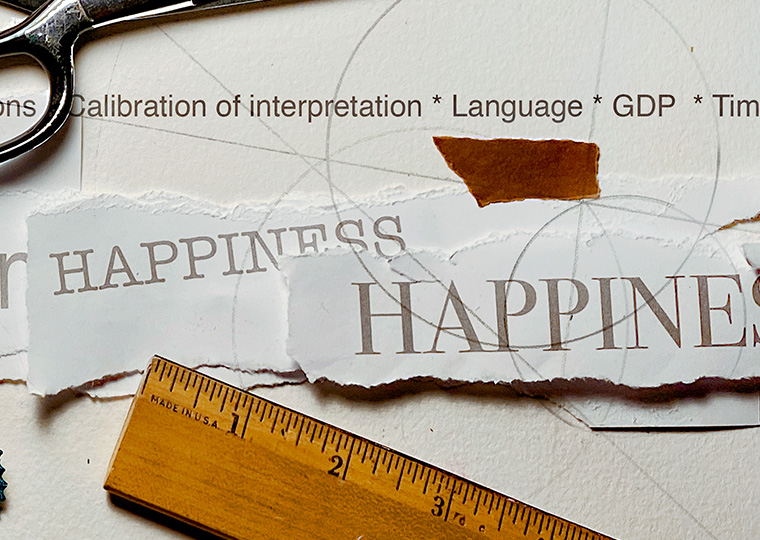Disregarding data, novices often sail into strong winds
Asset prices provide valuable, crowdsourced information. Every time a stock trader gains a new piece of information about a company, whether public or inside information, his trading potentially moves the stock price to better reflect that information. In this way, a stock’s price can be thought of as a repository of information signals — all the available information, in a perfect world.
In a paper published in American Economic Journal, UCLA Anderson’s M. Kathleen Ngangoué and Humboldt University of Berlin’s Georg Weizsäcker examine whether a market’s structure plays a role in how effectively traders learn from prices. The authors find that in certain types of markets, traders neglect information conveyed by prices, while in others, they use the price information to make better decisions.
Divining what traders are thinking by simply looking at market transactions is a challenging task, so Ngangoué and Weizsäcker designed a study of individuals’ behavior in two types of markets:
- The first resembles the opening auctions used by many stock markets. In these auctions, traders must enter their orders without knowing exactly what price their trades will be filled at. To account for this price uncertainty a trader may enter limit orders, that is, the highest (lowest) price at which a buy (sell) order may be fulfilled.
- The other market type is one in which price quotes are listed (e.g., by market makers) — so one can see the price at which an order can be filled.
The goal of the researchers was to examine traders’ ability to learn from price information when the transaction price is observable to the trader before trading.
Learning from Other Market Participants
Using 144 university students as experiment subjects, half were placed in auction-type markets, in which the execution price was unknown prior to placing trade orders, and half participated in quote-based trading in which prices were known prior to transactions.
The authors observed pairs of students, as one traded first (Trader 1) and one had the opportunity to incorporate the first trader’s move into her own decision (Trader 2). Each was given a separate piece of information about an asset that could be bought or sold. The asset’s value was unknown to the traders, so the implied goal was to glean all available information in order to optimize trading profits.
Using his private piece of information about the asset, Trader 1 placed a limit order (as in, I’ll buy one share but won’t pay more than $50) first and his trade affected the asset price. This provided Trader 2 with additional information besides her own piece of information: The more Trader 1 was willing to pay for the asset, the more likely he was to have some positive information about the asset and the more upward pressure he would exert on the asset’s price.
Hence, Trader 2 should always consider two pieces of information — her own private piece and Trader 1’s information that is reflected in the price. If, say, Trader 2’s private signal was bullish and so was the decision of Trader 1, that’s doubly encouraging to buy. Or vice versa, if the signals disagree — Trader 1 sold and Trader 2’s private information was bullish — Trader 2 has to decide who’s better informed.
As long as Trader 2 knows how Trader 1’s decision affects the asset price, she does not need to see this price to take into account this additional information. What matters is the realization that optimal trading depends on the price and that she should submit a trade order that is price contingent (as in, ‘if the price is really high, then the asset is probably valuable and I should buy another share, but if it is very low, then I should get rid of a likely worthless asset’).
In both types of markets, Trader 1 trades before Trader 2, thereby affecting the price that is relevant for Trader 2. In the auction-type market, Trader 2 does not see the asset price at the moment that she submits her trade order. In the quote-based market, she does first see the price and then must decide whether to buy or sell.
In both types of markets, the trades conditional on the price should be the same because a high price contains the same information, whether or not Trader 2 can see it.
In the experiment, however, Trader 2’s behavior substantially differed across market types. In the auction-type markets, traders tended to neglect pricing information provided by the hypothetical price and simply placed orders according to their private signal. These were labeled as naïve traders by the researchers. When traders saw the actual transaction prices in the quote-based markets, they were more likely to react to the price in conjunction with their own signal and make more optimal trades.
Naïve Traders Fighting the Market Trend
Averaging across the experimental trades, naïve trading occurred 37% of the time in auction-type markets versus 19% of the time, or half as often, in quote-based markets. The results showed evidence that the structure of the market had a clear impact on how efficiently price information was incorporated into trading.
The researchers noted that naïve traders tended to speculate against price movements, pushing the price back toward levels seen before new information was provided. Because of this, naïve trading slowed down the movement of the price toward the actual fundamental value of the asset. This was seen particularly in the auction markets.
Ngangoué and Weizsäcker determined that the auction-type markets required traders to abstractly reason through all possible price contingencies. Traders in the quote-based markets saw the actual price updates, which simplified their efforts to glean information from prices.
Arguably, most of today’s regular markets operate in a hybrid form of these two market types. On many exchanges, past and current price quotes are readily available to traders, yet, as market fragmentation grows and the speed of trading gets faster, slower retail traders are left to submit orders without really knowing what their transaction price will be. They must consider the various possible scenarios to adjust their trading decisions as necessary.
Featured Faculty
-
Kathleen Ngangoué
Assistant Professor of Global Economics and Management
About the Research
Ngangoué, M. K., & Weizsäcker, G. (2021). Learning from unrealized versus realized prices. American Economic Journal: Microeconomics, 13(2), 174-201. DOI: 10.1257/mic.20180268






